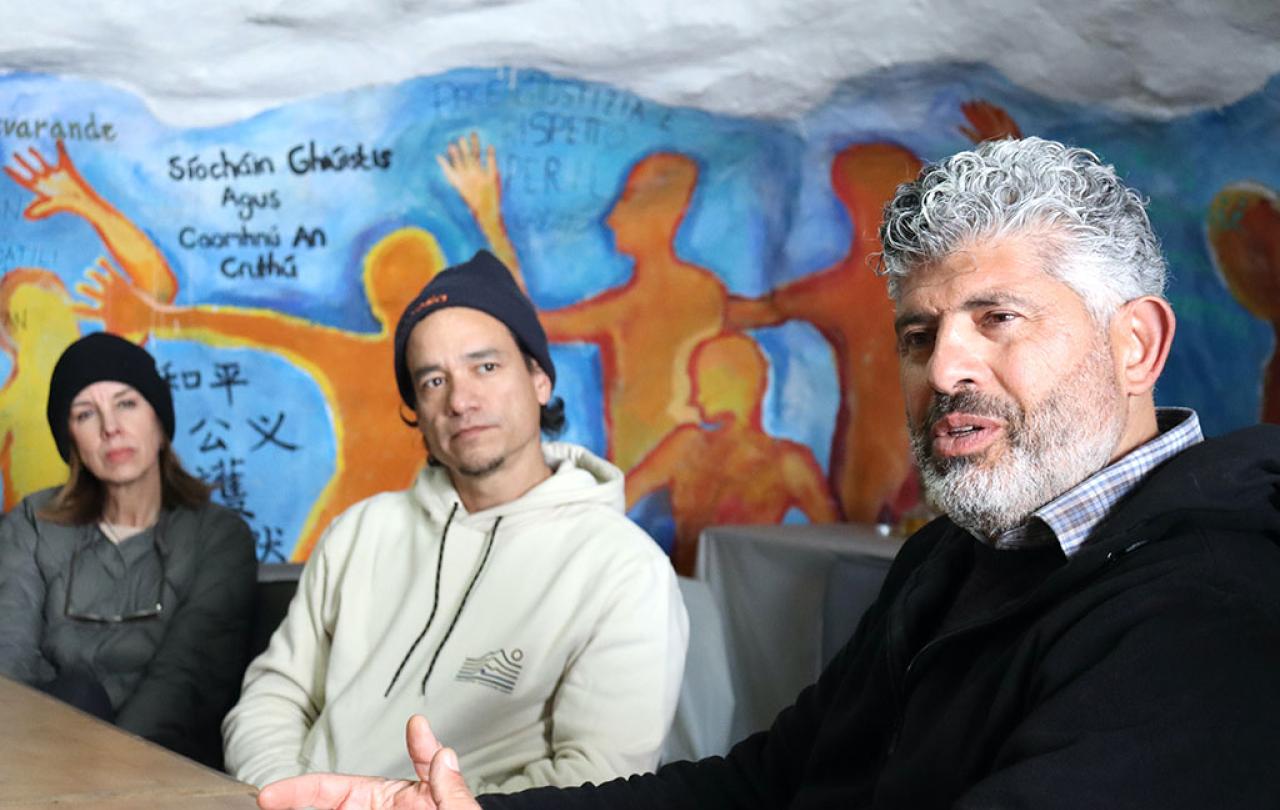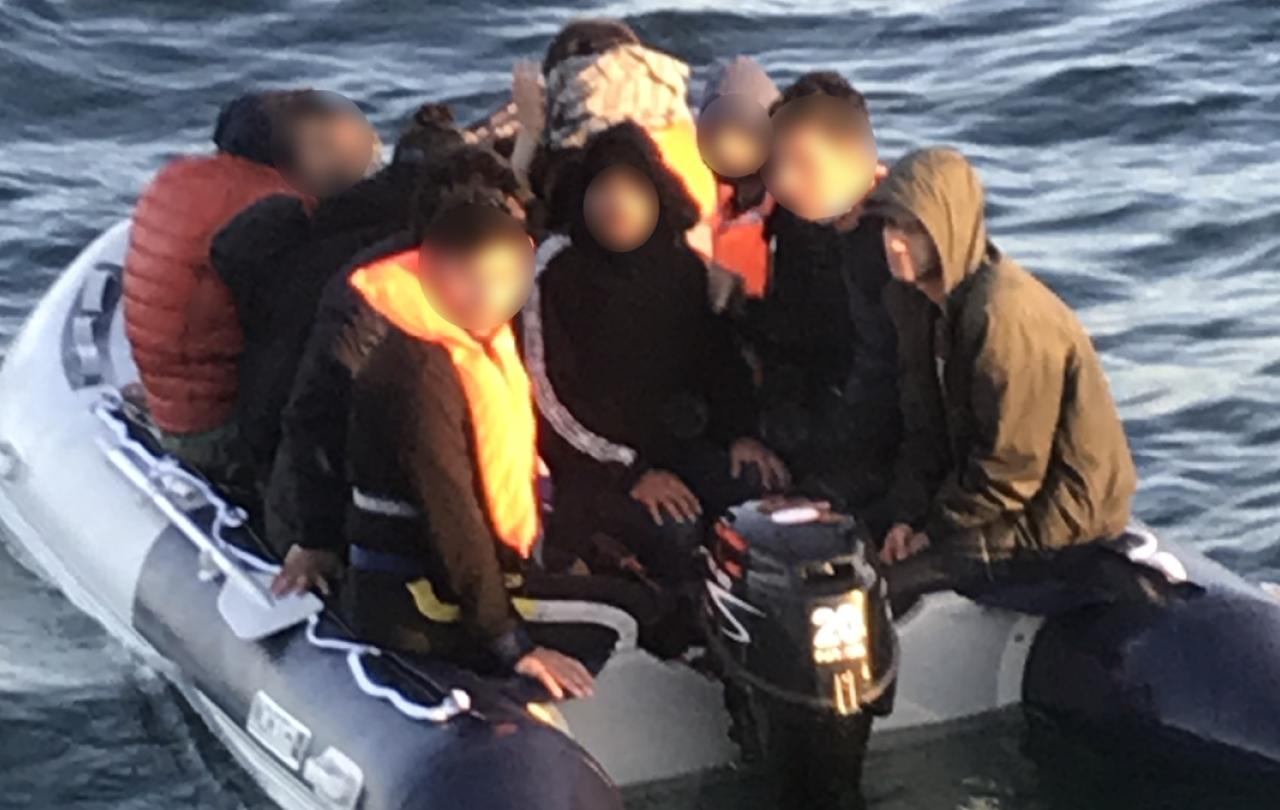
The world seems enveloped in darkness right now. The list of things that hide and extinguish the light is long, but for many of us it is the ongoing war in the Middle East that casts shadows of gloom and foreboding over our days and sometimes our sleepless nights.
As I write, Palestinian men, women and children in Gaza continue to die daily from unrelenting bombardment. Treatable injuries and illnesses are now fatal. Many lack access to food and clean water. About 134 Israelis remain in captivity. The West Bank teeters on the brink as ideological settlers pursue an agenda of harassment and displacement of Palestinian villagers.
Israelis and Palestinians remain deeply traumatized people and are transferring their untransformed traumas onto each other in endless cycles of conflict that are brutal to both, though glaringly asymmetrical. The rest of the world cheers and rationalizes and mourns and protests and marches and divides itself as the body count in Gaza soars.
‘Hope is not the same thing as optimism, hope is not a feeling. Hope is what you do.’
Even for those of us watching from a distance, despair is unavoidable, and in many ways, the only rational response. Who dares speak of hope amidst such horror? And yet, without hope we are all lost. Hope is essential for life and flourishing--a life devoid of it is only existence. But how do we face such a brutal reality and look to the future with any sense of a better one? Is it even possible?
Hope is possible, even in such a time as this, but only if we define it correctly. The Palestinian theologian Mitri Raheb says that hope is not the same thing as optimism, hope is not a feeling. Hope is what you do. We push back against violence, hatred and fear by living and acting in hopeful ways. Daily acts of resistance against injustice and brutality protect and nurture our humanity and open up space for our own transformation. As we allow ourselves to be transformed we can be better agents of healing in the world around us. Hope is what you do. It is an active, intentional, clear-eyed yet generous way of living in the world.
The physicist Niels Bohr said the opposite of a fact is a falsehood but the opposite of a truth may be another profound truth.
And it’s important to connect hope and action in a moment like this in particular because the horror we’re witnessing has a context. This is not a natural disaster. We're not where we are simply because bad things happen, but because we brought ourselves here. Because too many have believed the lie that freedom and security come through violence, and that equality and peace can come via ideologies of exclusion and religious or ethnic superiority. We have accepted the fiction that our lives are not interrelated with those of our neighbors. And we have imagined that inequitable systems of subjugation and control can be sustained forever.
And so we keep hope alive by embracing the truth and grounding ourselves in the conviction that the death and destruction of this war will only lead to more of the same. Our words and our actions in this moment can be demonstrations of hope when they are rooted in a steely conviction that the horror of October 7th did not make Palestinians freer, and nothing that’s happened since is making Israel, or any of us, safer. This is how we got into this, not how we get out of it. Violence begets violence begets violence. We act in hope by calling for a ceasefire and the release of hostages. And ultimately we set our sights on a new reality in which Palestinians and Israelis can enjoy freedom, dignity and security in equal measure.
Here are some practices of the peacemaker that not only represent acts of hope but that open the possibility to bring about change in us and change in the world.
Listen to understand. Many of us live within the sound of only one narrative of the shared reality of Israelis and Palestinians. Listening to understand those whose stories are new to us is a first step in nurturing the empathy that will allow us to see the humanity of all.
Listening to those with whom we disagree, not to combat or argue, but to truly understand has the potential to sharpen what we know and believe even as it holds open the possibility of lowering the temperature between us and the person being seen and heard. And this may expose that behind our disagreement may be something deeper. (Hint: It’s often fear.)
Learn to hold experiences in tension. The physicist Niels Bohr said the opposite of a fact is a falsehood but the opposite of a truth may be another profound truth. Palestinians and Israelis each have their own connections to the same piece of land, their unique histories and experiences, and any honest peacemaking effort great or small has to hold these experiences in tension, not as equally true, but as the things that must be understood and dealt with in any effort at conflict resolution.
Peacemakers know the importance of centering the voices of those most vulnerable. In this case, that has to begin today with the millions of displaced Palestinian civilians in Gaza, the families of the hostages, the Israelis who’ve fled their homes in the south and north of their country, and the Palestinians trapped and apprehensive in the West Bank fearing all this is coming their way.
Peacemakers also acknowledge that each of us has agency. We may think our influence is small, but we have communities and circles of friends, we have elected leaders who are meant to be responsive to our concerns. There are always things we can do, and the cumulative effect of many small actions can bring change.
At a time of such horror and atrocity, casting blame is an easy and natural response. But what can’t be overlooked for those who want to create hope is the necessity of doing the honest work of self-interrogation. The persistence of antisemitism for centuries and its alarming rise in the present, coupled with the growth of anti-Arab and Islamophobic sentiments, force us each not only to examine our internal biases and those that exist within our own communities, but also to confront them. Credible voices from within our communities are needed, to borrow from Jesus of Nazareth, to point out the proverbial logs in our own eyes so that we might see more clearly to help our neighbor remove the splinters from theirs.
Part of the work of self-interrogation is also to own our complicity in creating the conditions we see today. For too long our governments in the West have acted as if the blockade of Gaza was somehow sustainable, and that Israel can perpetually occupy the West Bank with no political horizon for a better reality. And in recent years, the Americans have pursued a fiction that Arab-Israeli normalization could proceed with abandon while the Palestinians fall ever deeper into Israeli control and their own internal political dysfunction.
The fact that we are a party to this conflict---our implication in it--- also creates the opportunity and the imperative to transform our involvement into morally grounded policies and interventions that create greater space for the work of peacemaking and conflict resolution. Which leads us to advocacy as an essential practice of peacemaking
He told us the peacemakers are blessed. His universal invitation to live as his ambassadors of reconciliation and healing still echoes down through the centuries as a calling the world so desperately needs.
In the West, as an atrocity of historic proportions is being perpetrated right now, in real time, in our lifetime, we have to call on our leaders to end the ruination of Gaza. To work to return the hostages. To truly commit our governments to cease being peacetalkers and to become peacemakers. To use our influence to create the conditions for true security, honored dignity and freedom for Palestinians and Israelis alike, in equal measure. To support diplomatic initiatives, political arrangements and grass roots efforts that are all oriented toward their mutual flourishing,
For people of Christian faith, these dark days have now taken us into our season of Advent. The American Episcopal theologian Fleming Rutledge says “Advent always begins in the dark.” But it ends with the arrival of God in our midst, God with those in the ravaged kibbutzim of southern Israel. God with those in the bombed out wreckage of the cities and refugee camps of Gaza. And God with those cowering in fear in their homes in Bethlehem, the very place where the Christian story begins. In a normal year we sing, some years deeply from our hearts and our sadness, 'O Come O Come, Emmanuel, and rescue us'. This year that cry is nearly guttural for many of us. But it is a cry rooted in a belief that God has not forsaken us in our hatreds and our violence and our inhumanity. He is a God of transformation and invites us to join him in the work of healing and repair. Jesus came to make the world more merciful and just, to teach us to love our enemies, and to show us how to care for the weak and the vulnerable. He told us the peacemakers are blessed. His universal invitation to live as his ambassadors of reconciliation and healing still echoes down through the centuries as a calling the world so desperately needs. This Advent, let us live as agents of hope as we work for a future in Israel/Palestine---and in our own communities-- in which all can flourish in justice, security, freedom and dignity.





